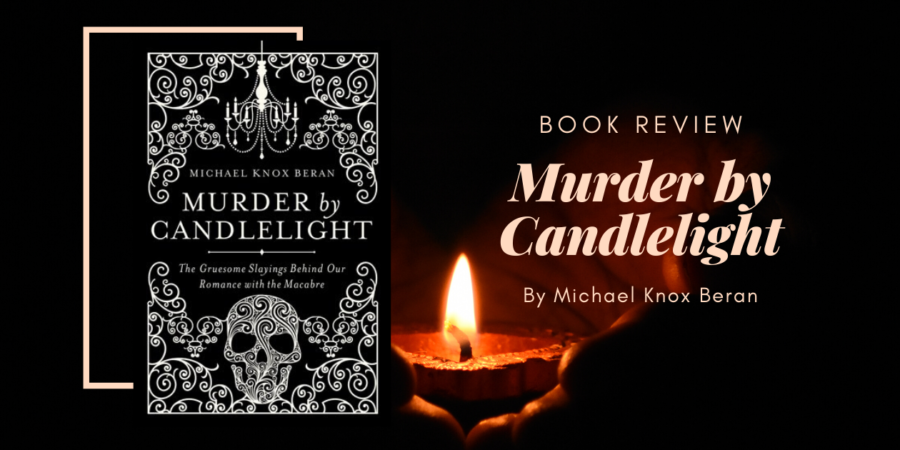If you look at the cover, you’ll know the reason why I picked up this book. The synopsis pretty much sealed the deal – it promised to explain the history of why we’ve fallen in love with murder.
To That End, Murder by Candlelight focuses on not one but five murder cases:
- The Radlett Murder (details here)
- The Murder and Dismemberment of Hannah Brown (some details here)
- The Murder of Lord William Russel (details here)
- Ratcliffe Highway Murders
- Jack the Ripper
Each section gives an account of the murder, the trial, and how certain influential writers treated the case. Sadly, the last aspect was only touched on briefly for the first three sections and the book read more like a brief account of the various crimes. Since each of these murders could be the subject of the book, the impression that I got was that of three very rushed summaries of the murders, an impression that was not helped by the fact that the chapters were very short and made each case feel very brief.
I mentioned that the sections on how influential writers and thinkers treated the cases were very brief – normally a chapter or two after the recounting of the murder, but I disagree with the little the author does say. The book writes that in detective fiction:
“The element of palpable evil is all but absent in these books; in its place we find a drawing-room comedy of butlers, vicars, dowagers, and retired colonels, phrased in an ironic-genteel prose such as Jane Austen might have written had she been drawn to empty subjects.”
And about ten pages further on:
“Why do Agatha Christie and Dorothy Sayers never give their readers the courage to look real evil-doing in the face?”
It might be because I read The Golden Age of Murder not too long ago, but I disagree with this assessment of the murder mystery genre. Even in the Golden Age, authors were subverting the very rules that they created. Even if you want to charge Christie and Sayers with the image of being “tame” (which I don’t agree with), what about writers like G. K. Chesterton, whose Father Brown novels deal with the nature of the human soul? Surely that counts as looking at evil in the face?
Overall, I liked the cover of this book and being introduced to three new cases that I hadn’t heard of before. It’s a pity that the promising start did not carry through but if you’ve got a free afternoon and want to learn about murders in more detail than a news article (but shorter than a full-length book), this could be something to check out.
If you liked this, you may also like…
Murder by the Book by Claire Harman – The case of Lord William Russel’s murder in detail and with a connection to popular literary culture.
The Golden Age of Murder by Martin Edwards – A history of the Detection Club and how authors like Agatha Christie, Dorothy Sayers, and Anthony Berkely subverted and created the rules of the murder mystery genre.
Featured Image: Photo from Canva

Yeah, I agree with you. Christie’s books often have a very tense, ominous feel to them as you can feel the sourness in the relationships. Miss Marple warns, “People simply will not believe that a murderer is dangerous” and Hercule Poirot says, “I do not approve of murder.”
For me the scariest thing is always when you get a little hint of what it’s like inside the murderer’s mind. In Sayers’ Gaudy Night, someone says they saw a lady “walking along the street, twisting her hands and muttering to herself.” Chilling.
So, yeah, I think that rather than trying to tame murder, both these authors were simply exploring what it would look like in their genteel context … and showing how, human beings being what they are, it can be found anywhere, not just in dens of crime.
It’s almost the opposite of when the public becomes fascinated by someone like Jack the Ripper precisely because it seems so sordid.
I think Christie was great at showing how anyone, no matter how genteel, is capable of murder. I haven’t been able to get a copy of Berkeley’s books (luckily one of them will be in the public domain next year) but I hear he’s more obviously “dark”. So I think it’s safe to say that the writers at those times were exploring the darker side of humanity, just in their own ways.
That cover is beautiful 😮! I’m not usually inclined to read non-fiction, but this sounds like a really interesting concept for a book.
It’s an interesting concept but I’m not sure about the execution. If you want a variety of true crime stories this might be it, though!